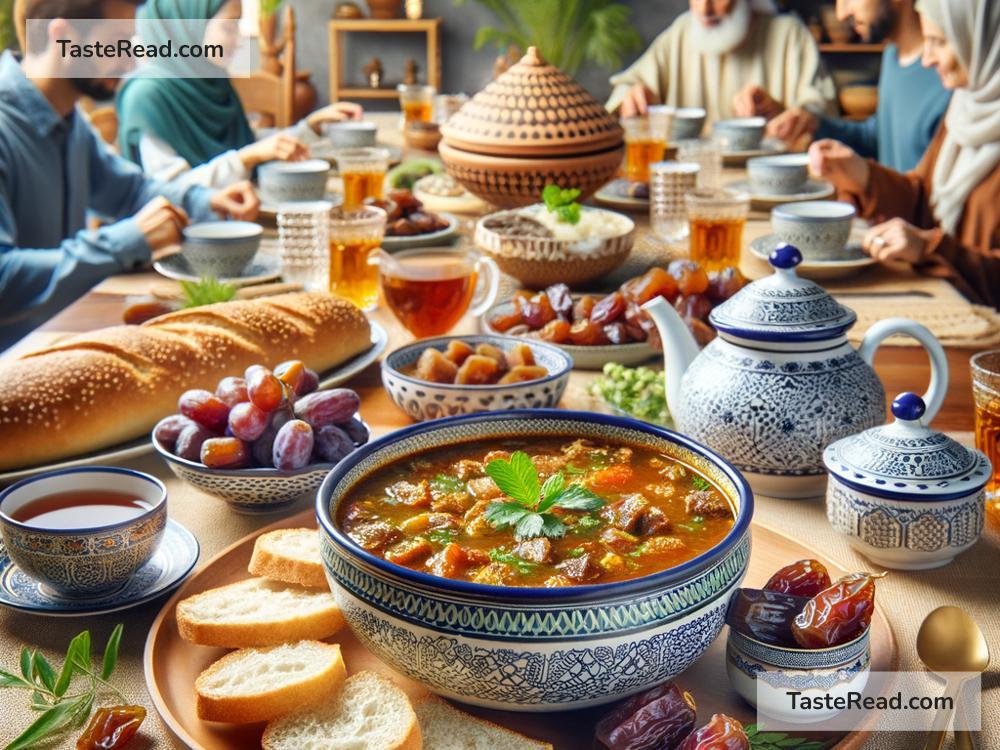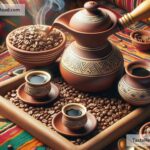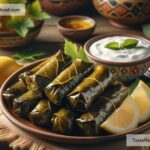Cultural Rituals Surrounding Moroccan Harira Soup During Ramadan
Ramadan is one of the most important months in the Islamic calendar. It is a time of fasting, prayer, reflection, and community for Muslims around the world. However, each country has its own traditions and unique ways of observing Ramadan, and one of the richest and most beautiful examples of this can be found in Morocco. During Ramadan, Moroccan families come together to share a special soup called harira, which is much more than just food—it holds deep cultural and spiritual significance.
What is Harira?
Harira is a warm and hearty tomato-based soup, packed with lentils, chickpeas, and meat (often lamb or beef), along with spices like cinnamon, turmeric, ginger, and black pepper. The distinctive flavor is further enriched with fresh herbs such as cilantro and parsley. Harira is often thickened with flour or eggs to give it a smooth, velvety texture.
This delicious soup is traditionally served during Ramadan to break the daily fast at iftar, the meal Muslims eat after sunset once the day’s fasting is over. It’s not just the soup itself that makes harira special—the rituals associated with it during Ramadan make it deeply meaningful.
Harira’s Role During Ramadan
Ramadan involves fasting from dawn to sunset, which means refraining from eating, drinking, and other physical needs during daylight hours. After a long day of fasting, iftar is a moment of joy and relief. Moroccan families often begin their iftar meal with dates and milk, as recommended by Prophet Muhammad (peace be upon him). Then, they move on to a comforting bowl of harira.
In Morocco, harira is not just seen as food—it’s seen as a symbol of home and family. Many people associate the smell of harira cooking in the kitchen with warm memories of growing up and celebrating Ramadan with their loved ones. Its rich and nourishing qualities provide energy and comfort after a long day without eating. The ingredients are carefully chosen to replenish the body and offer balance, making harira the ideal dish to start the evening meal during Ramadan.
Cooking Harira: A Family Affair
Preparing harira is often a family activity, filled with love and tradition. Every household has its own recipe that has been passed down from generation to generation. In many families, grandmothers and mothers are considered the masters of the perfect harira. They know exactly how much spice to add or how long to simmer the soup to develop its rich flavors.
In Moroccan kitchens during Ramadan, the preparation of harira often begins early in the day. The aroma of spices fills the air as lentils are soaked, chickpeas are cooked, and tomatoes are blended. Many Moroccan women prepare large pots of harira since it’s common to share food with neighbors, friends, and the less fortunate during the holy month. This act of generosity reflects the values of kindness and community that are central to Ramadan.
Sometimes, harira preparation becomes a collaborative effort, where members of the family pitch in to chop, stir, and taste-test. Younger members of the family are often encouraged to learn how to make harira so that they can continue the tradition in the future.
Serving Harira: More Than Just Soup
When the time for iftar arrives, harira is usually served with a variety of other treats. Alongside the soup, families often enjoy chebakia (sweet sesame cookies fried and coated in honey), boiled eggs, fresh bread, and pastries. These dishes complement the flavors of harira and create a satisfying meal that helps people regain their energy after fasting all day.
Gathering around the dinner table to share harira is an important ritual in itself. It’s a time for family members to reconnect, bond, and share their thoughts about the day’s experiences. Even in situations where people are unable to eat iftar at home, such as when they are traveling or working, they will often seek out harira to feel a sense of comfort and tradition.
Harira Beyond Ramadan
While harira is most closely associated with Ramadan, its cultural significance extends beyond the holy month. It’s often served during other family gatherings, celebrations, and special events. For many Moroccans, harira represents warmth, generosity, and hospitality, which are values that are deeply ingrained in Moroccan culture.
Even Moroccans living abroad continue to make harira as a way to stay connected to their roots. The soup serves as a reminder of home and the cherished rituals of Ramadan in Morocco.
Conclusion: A Bowl of Connection
Moroccan harira is much more than a dish—it’s a story, a tradition, and a bond between generations. During Ramadan, as the sun sets and families gather to break their fast, the simple act of sharing a bowl of harira becomes a powerful reminder of love, community, and faith.
Whether you’re in a bustling Moroccan city or a quiet rural village, the smell of harira cooking during Ramadan is unmistakable. It symbolizes the spirit of togetherness that defines this holy month. For Moroccans, harira is not just soup; it is a reflection of their culture, their family ties, and their devotion. Every spoonful is filled with centuries of tradition and the values that make Ramadan a special time of the year.


